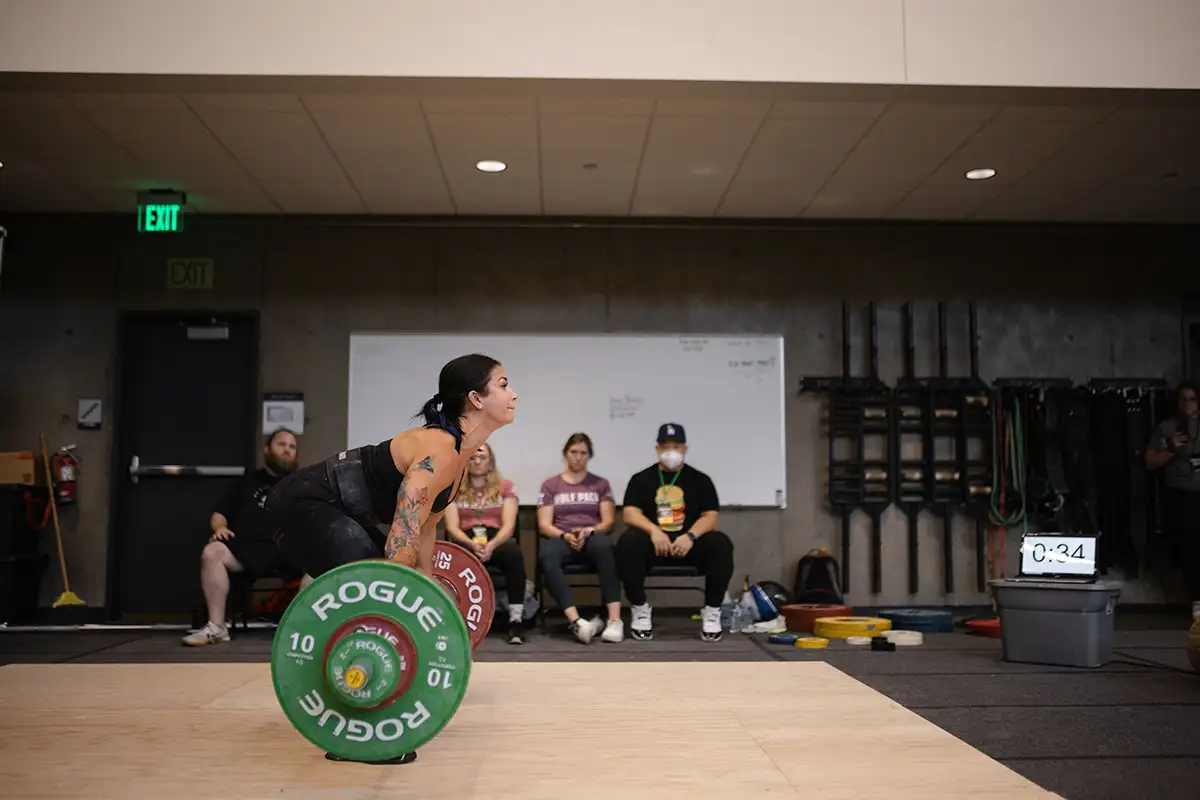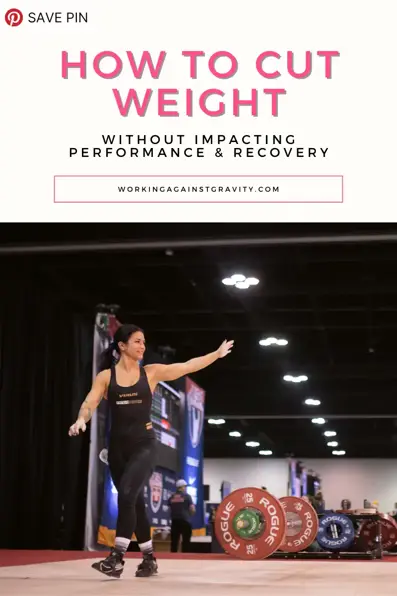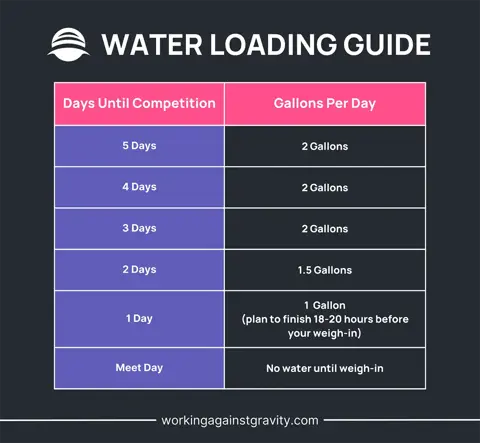
Whether you compete in weightlifting, powerlifting, judo, boxing, or wrestling, many sports require you to have a specific body weight. If you compete in one of these, you need to be more focused on the scale than the average athlete and may have to cut weight to get there.
But what is weight-cutting? How can you cut weight while feeling on top of your athletic game?

What is Weight Cutting?
When it comes to competition day, ensuring you’re at or below a specific weight class is paramount, but feeling your best when “go time” actually comes around is equally as important. This is where weight-cutting comes in!
Weight cutting is the process of losing weight before a competition to ensure that you’re a specific weight. Knowing and utilizing the tactics below will allow you to check both boxes, but before we talk about how to make weight, let’s discuss choosing a weight class and how to know which one is right for you.
Advertisement
What Weight Class Should I Compete In?
There are several factors to consider when choosing your weight class: experience level, current body composition, current calorie intake, and your goals. Let’s break each down in further detail.
1. Experience Level
If you’re brand new to a sport, we recommend showing up, weighing in, and competing at whatever class your natural weight puts you in. Once you have more competitive experience, consider going up or down a class if needed. For your first few comps, go out there and have fun without adding the stress and pressure of “making weight.”
2. Current Body Weight and Body Fat Percentage
The leaner you are, the harder it is to lose weight. Losing more than 4% of body weight close to a competition can hinder performance, and that’s the last thing you want when working towards the podium. If you are extremely lean, dropping a weight class is usually unproductive—we recommend staying in your current class or increasing muscle mass and weight.
3. Calorie Intake
Properly fueling your body is essential for performing well in any sport. Choose a weight class that allows you to eat the most calories while building muscle and performing well. Eating too little results in low energy, high hunger, and sub-optimal recovery. Competing in a lower weight class is not advantageous if you cannot effectively perform at that weight.
4. Your Goals
If you’re competing at the highest level and are on the brink of breaking records or making an international team, cutting weight for a specific competition may make sense. However, if you are a beginner or compete in the intermediate category, the sacrifice, stress, energy, and discipline it takes to commit to a lower weight class may not be worth the trade-off. Keep your long-term goals in mind as you choose your weight class.
Advertisement
With that covered, let’s move on to the typical weigh-in timelines you will encounter.
2-Hour Weigh-Ins vs. 24-Hour Weigh-Ins
Weight class weigh-ins usually occur two hours or twenty-four hours before the competition. These two very different scenarios regarding weight-cutting require different approaches.
24-Hour Weigh-Ins
In this scenario, you weigh in 24 hours before competing. In this case, you can be more aggressive with your weight-cutting strategies since you’ll have more time to eat, drink, and recover after making weight.
A 24-hour weigh-in allows your body time to return to optimal food and fluid intake levels and minimizes the negative effects of being under-fueled.
Advertisement
2-Hour Weigh-Ins
The window to refuel is much smaller with a 2-hour weigh-in. Ideally, you want to be at your perfect weight and peak performance right before the competition. A less aggressive cut (i.e., a slow and steady calorie cut leading up to your competition date) is usually the best approach if you know a two-hour weigh-in is in your future.
When Should You Start Cutting Weight?
Deciding when to start your weight-cutting techniques depends on how long you have until the day of the competition. You’ll need more aggressive strategies if the competition is only a few weeks out and you have more weight to lose. If you have less weight to lose or your competition is months away, you can stick with a slower, steadier approach.
Cutting Weight 2-3 Months Out
The more weight you have to lose, the longer you should give yourself. A gradual calorie cut will spare muscle and maintain performance levels throughout training.
If you have less weight to lose, starting your cut a little closer to the competition is a better call because you spend less time in a calorie deficit. Depending on your weigh-in windows (two hours versus 24 hours), aim to be within an appropriate weight range no less than seven days from competition day.
Advertisement
Appropriate Weight Ranges
Weight Ranges for Female Athletes
Aim to be 1-2kg over your weight class seven days before starting any weight-cut strategy above and beyond a moderate calorie deficit. This allows a more significant calorie deficit or water manipulation strategies to drop the final kilogram or two.
Weight Ranges for Male Athletes
Aim to be 2-3kg over your weight class and use a higher calorie deficit and/or water manipulation in the final seven days.
Nail down your competition date and time of weigh-in as early as possible to properly assess how large of a deficit you should implement or whether your final weight goal is realistic.
Advertisement
How to Cut Weight One Week Out
Seven days before your weigh-in, it’s essential to stay in tune with your body and accurately monitor changes any changes. You will need to keep track of:
- Water intake
- Macro intake
- Body weight before going to bed
- Body weight when waking up
The difference between your “right before bed weight” and “as soon as you wake up weight” is known as your “float weight.” It is your average weight loss after a full night of sleep. Knowing this number will help you ascertain what weight you need to be the night before a competition to wake up at your competition weight.
For example, if you are competing at 96kgs and your float weight is 1kg, you need to go to bed the night before weighing no more than 97kgs to make weight.
If weight is not moving quickly enough, there are strategies you can implement to drop those final pounds.
1. Drop total daily carbohydrates
For every 1g of carbs you ingest, the body holds on to 3g of water. By reducing carbs, you can also reduce water weight. Start with 15g-30g at a time and assess weight changes. Cutting carbohydrates will reduce total calorie intake. If calories are already low and further reduction would cause more harm than good, shift your calories coming from carbs to calories from fat.
Advertisement

2. Reduce food volume and fiber
The food you eat adds to your total body weight. Fiber-rich options like vegetables are less calorie-dense and require more volume to achieve the same nutritional value. By reducing these in the days leading up to competition, less food (and weight) is working through your system. Opt for denser carb options to hit your daily goals with less food weight.

3. Decrease sodium intake
Just like carbohydrates, sodium causes water retention. If you minimize sodium intake leading up to competition, your body will hold onto less water, and your weight will decrease.
4. Water Loading/Cutting
The final strategy for last-minute weight drops warrants a comprehensive walkthrough, so let’s take a deeper dive below.
Advertisement
How to Water Cut or Water Load
Water loading and cutting is a tried and true method for dropping significant amounts of weight in a relatively short period.
What is Water Loading
When you drink extreme amounts of water, your body goes into “flushing mode.” Then, when you decrease your water intake, your body remains in “flushing mode” and continues to process that water through urination even when fluids are not replaced. This increase in water excretion causes rapid weight loss.
We’ve seen athletes lose 15 lbs with a water-loading strategy, but this is not the norm. Each athlete is different, and you will have to see how your body responds, ideally before making weight for a competition is on the line.
How Much Water Should You Drink During a Water Load?
Although best handled by a coach, the chart below is an excellent starting place when determining how much water to drink during your water load.
Advertisement

How to Rehydrate After a Water Load
If you decide to use a water-loading technique, it is essential to properly rehydrate after weighing in. This means drinking water and rehydration liquids like Pedialyte, Liquid IV, or Drink LMNT, taking a multivitamin to replenish micronutrients, and increasing sodium for water retention.
Remember that while performing a water load and cut, you still need to monitor your daily nutrition and adjust carbohydrates as necessary. You should also reduce sodium intake during this time.
Last Minute Weight Cutting Strategies
Sweating
You can leverage a sweating strategy if you’re two days out from the meet and haven’t hit your desired weight range. The most popular ways to lose water weight through sweat are utilizing a sauna or a hot bath with Epsom salt. With both techniques, use something thin, like a credit card, to remove sweat from your body. Since sweat cools the body, removing it will regenerate sweat more rapidly.
If you choose the bath strategy, fill the tub with hot water to waist-deep. Go neck-deep under the water for two to three minutes and then return to waist-deep for two to three minutes. Between rotations from waist to neck, remove sweat with the “scraper.” Repeat this cycle a minimum of three times.
Advertisement
Saliva Gathering
If you are in a real pinch, use sweet tarts, sour gum, or gum to promote salivation. Rather than swallowing this saliva, you need to spit it into a container. You can be as precise as weighing the amount of saliva in the container. If you need to lose 0.2kg/200g, you can use a scale to weigh out 200g worth of spit.
Post-Competition Nutrition
Eating lots of sugary foods (donuts, anyone?) may be tempting after competing. This will be especially true if you had to cut weight and drastically decrease calories in the weeks or days leading up to your competition.
If that is the case, please get in a substantial meal first! If you go straight for the sugary stuff, blood sugar will spike, and it is more likely that you’ll experience a crash later in the day. A good meal post-lifting is important to replenish glycogen and keep energy stable. Opt for a complex carb, protein, and healthy fat source.
Communication is Key
No matter who you are or when your competition is, communication with a coach who can help you make weight in a stress-free way increases your likelihood of not only making weight but performing at your best when you get there. And at the end of the day, that’s what it is all about, right?
Advertisement
At WAG, we teach our coaches to guide you through weight cuts while keeping you as strong and fueled as possible. We get information from the latest science and some awesome WAG coaches who go through this first-hand as they compete on national and international stages. If you participate in a weight-specific sport, consider signing up for 1-on-1 coaching ahead of your next big comp!
This article includes affiliate links. We only recommend products we have tried and love!
Mitch Lockhart
Schedule a Free Intro Call
Working Against Gravity has led the macro tracking and health space for over a decade. Our team doesn’t just understand the science of nutrition—we’ve spent years mastering the art of tailoring it to fit your life. That means no cookie-cutter plans, just real strategies that have worked for over 30,000 people.
Schedule a free call with our team to learn how working with a 1-on-1 WAG coach will help you reach your goals.



